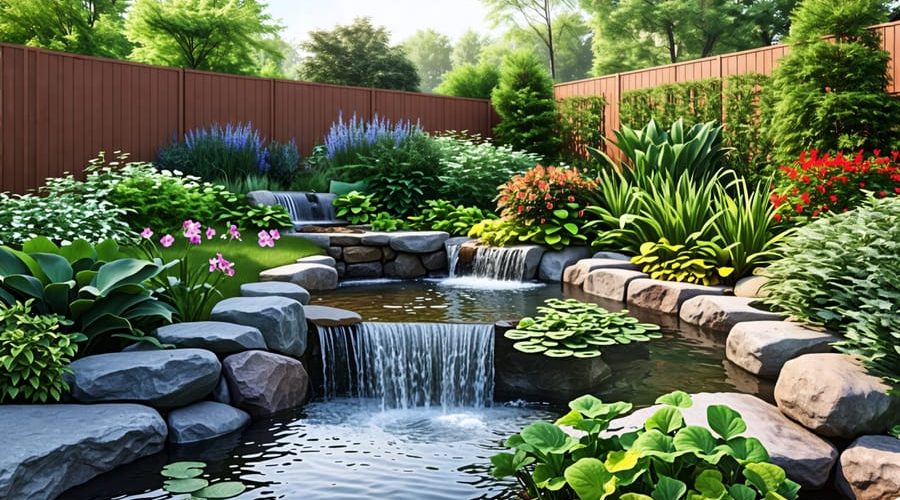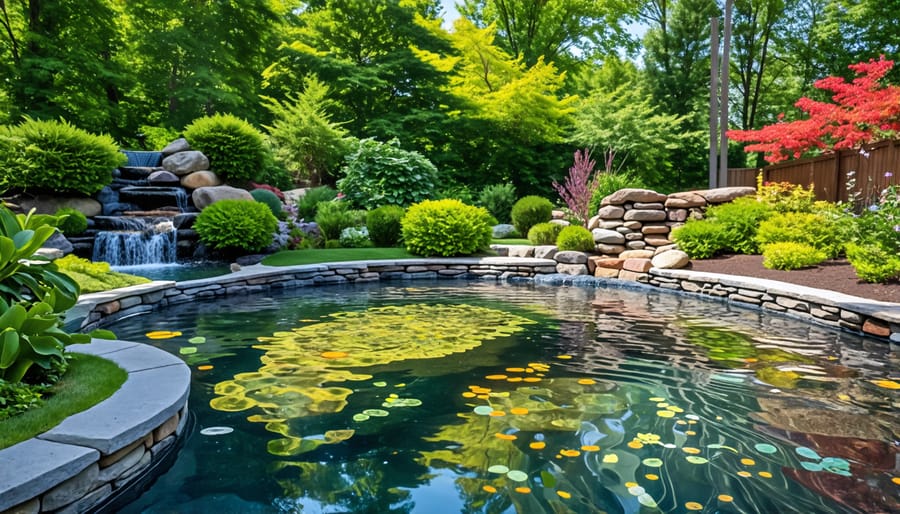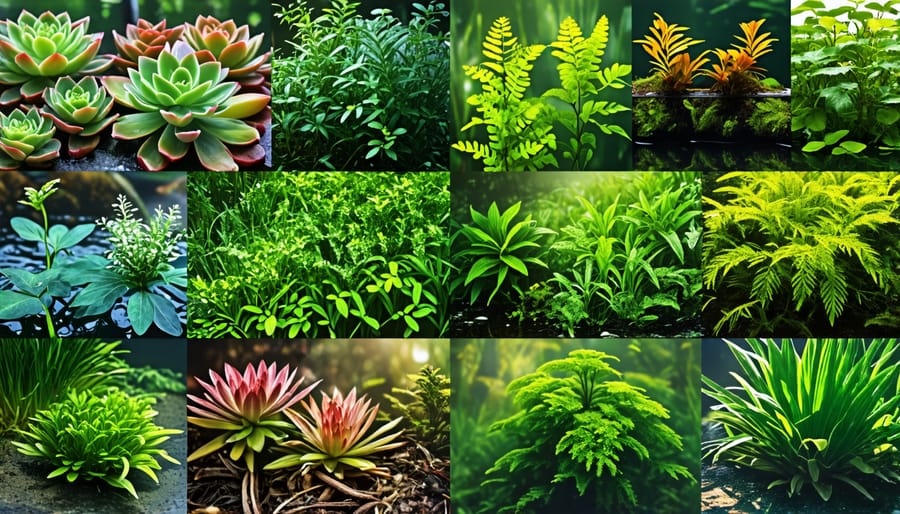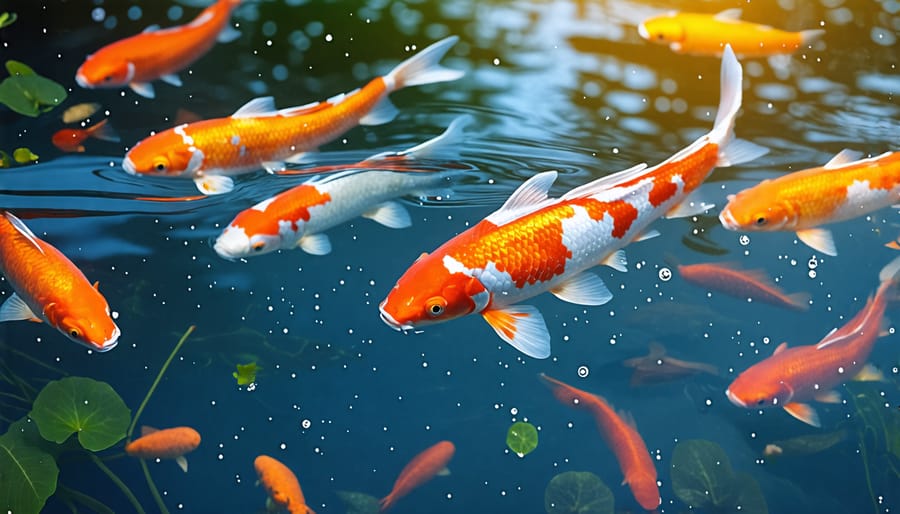
7 Ways Your Water Garden Can Weather Climate Change
Climate change is no longer a distant threat – it’s a pressing reality impacting every corner of the globe. From rising seas swallowing coastal communities to devastating droughts scorching farmlands, the effects are impossible to ignore. But in the face of this existential crisis, there is still reason for hope.
By embracing climate adaptation and resilience strategies, we can build a future that is not just survivable, but thrivabl. It means rethinking how we design our cities, manage our natural resources, and support vulnerable populations. It requires bold policies, innovative technologies, and an unwavering commitment to environmental justice.
Most of all, it demands that we fundamentally change our relationship with the planet. We must recognize that our fates are intertwined with the health of the ecosystems that sustain us. By working with nature, not against it, we can create a world that is more resilient, more equitable, and more beautiful than we ever thought possible. The path ahead won’t be easy, but it’s the only way forward. The time for climate adaptation and resilience is now.
Design for Resilience

Robust Pond Construction
Building a pond that can withstand more extreme weather conditions requires careful planning and the right materials. Start by choosing a location that provides some natural shelter from strong winds and intense sun. Excavate the pond to the desired shape and depth, ensuring a gradual slope for shallow areas. Line the pond with a thick, UV-resistant rubber liner or preformed rigid pond shell for durability. Reinforce the edges with large rocks or concrete pavers to prevent erosion. Install a robust filtration system sized for your pond’s volume to maintain water quality. Consider adding an overflow pipe or spillway to handle heavy rains. Plant a diverse mix of marginal plants and floating vegetation to stabilize the banks, provide shade, and improve water quality. Regularly maintain your pond by removing debris, checking equipment, and monitoring water parameters. By following these robust pond construction techniques, you can create a beautiful and resilient water feature that will bring joy for years to come, even in the face of climate challenges. With a little extra effort upfront, your pond will be a tranquil oasis capable of weathering whatever Mother Nature brings.
Overflow and Drainage
Incorporating overflow areas and improving drainage are key strategies for making your water garden more resilient to flash flooding caused by climate change. One effective approach is to create a designated overflow zone, such as a shallow basin or swale, adjacent to your pond. This area should be slightly lower than the pond’s edge and filled with porous materials like gravel or river rocks to allow excess water to quickly percolate into the ground. Planting moisture-loving species in and around the overflow zone can help absorb water and stabilize the soil.
Ensuring proper drainage is equally important. If your pond lacks adequate drainage, consider installing a catch basin or French drain system to direct water away from the pond during heavy rainfall events. These systems typically involve a perforated pipe buried in a gravel-filled trench, which carries water to a safe discharge point, such as a rain garden or dry well. By implementing these overflow and drainage solutions, you can help protect your pond from the impacts of intense precipitation and maintain a healthy, thriving ecosystem in the face of a changing climate.
Climate-Smart Plant Selection
Climate change is making our weather patterns less predictable, with more frequent and intense temperature swings, droughts, and heavy rainfall events. These fluctuations can wreak havoc on our carefully tended water gardens. But don’t despair! By choosing hardy aquatic plants that can handle a wider range of conditions, you can create a pond paradise that’s both beautiful and resilient.
When selecting plants for your climate-smart water garden, look for species that tolerate varying water levels and temperatures. Many native aquatic plants have evolved to thrive in your region’s natural cycles of wet and dry, hot and cold. They often have deep roots that anchor them during floods and store water during droughts.
Some excellent choices include rushes, sedges, and cattails for the margins, and water lilies, lotus, and pondweeds for deeper areas. Floating plants like water lettuce and water hyacinth can provide shade and refuge for fish during hot spells, and they’re easy to remove if they get out of hand.
As you plan your plantings, aim for diversity. A mix of emergent, submersed, and floating species creates a more balanced and adaptable ecosystem. Plus, it adds visual interest and attracts a wider array of wildlife to your pond.
Remember, even the toughest plants need some TLC to get established. Give them proper spacing, anchoring, and fertilization at planting time. Monitor them regularly and remove any dead or diseased foliage. With a little extra care upfront, your climate-smart water garden will be poised to flourish through whatever Mother Nature throws its way.

Fish for Changing Conditions
As water temperatures rise and oxygen levels decrease due to climate change, it’s important to choose fish species that can adapt to these challenging conditions in your pond or water garden. Some resilient fish to consider include:
Mosquitofish (Gambusia affinis) – These small, hardy fish thrive in warm, oxygen-poor water and help control mosquito populations by feeding on their larvae. They are livebearers, meaning they give birth to live young, and can quickly establish a population in your pond.
Channel Catfish (Ictalurus punctatus) – Known for their adaptability, channel catfish can tolerate a wide range of water temperatures and lower oxygen levels. They are omnivorous bottom-feeders that help keep your pond clean by consuming algae, detritus, and small aquatic creatures.
Koi (Cyprinus rubrofuscus) – While koi prefer cooler water, they can adapt to warmer temperatures up to 85°F (29°C). These colorful, ornamental carp are hardy and resilient, making them a popular choice for outdoor ponds. Provide them with shade and deep water areas to help them stay cool during heat waves.
Bluegill (Lepomis macrochirus) – These native North American sunfish are well-suited to warmer, shallower waters and can tolerate lower oxygen levels. They are attractive, easy to care for, and can help control insect populations in your pond.
Fathead Minnows (Pimephales promelas) – Small and adaptable, fathead minnows can survive in warm, oxygen-depleted water conditions. They are excellent as feeder fish for larger species or as a low-maintenance option for smaller ponds.
When selecting fish for your climate-resilient water garden, consider their temperature and oxygen requirements, adult size, and compatibility with other species. Provide a mix of shallow and deep water areas, shade, and aquatic plants to create a diverse, resilient ecosystem that can better withstand the impacts of climate change.

Water Conservation Techniques
During times of drought, it’s important to have strategies in place to conserve water and maintain your pond’s health. One effective method is to install a pond cover or shade structure, which reduces evaporation by blocking direct sunlight and wind. You can create a simple DIY shade using shade cloth stretched over a frame made from PVC pipes or wood.
Another way to minimize water loss is by keeping your pond well-maintained. Regularly remove debris like fallen leaves that can decompose and degrade water quality. Prune any overhanging vegetation to reduce leaf litter and evaporation. Also, check for and repair any leaks in your pond liner promptly.
Planting drought-tolerant vegetation around your pond can help retain moisture in the soil and provide shade. Choose native plants adapted to your local climate, such as sedges, rushes, and ornamental grasses. These plants have deep root systems that hold water and prevent erosion.
In severe droughts, you may need to top off your pond with fresh water. However, be mindful of any water use restrictions in your area. Collect rainwater from your roof using rain barrels or a cistern system to have a backup supply. When refilling, add water slowly to avoid disturbing the pond’s ecosystem balance.
Lastly, consider installing a water recirculation system with a timer. This allows you to control when and how long your waterfall or fountain runs, conserving energy and reducing evaporation. With these water-wise techniques, you can help your pond weather dry spells while still enjoying its beauty and serenity.
Prepare for Extremes
With climate change bringing more intense weather extremes, it’s crucial to prepare your pond for heat waves, cold snaps, and severe storms. To protect fish and plants during heat waves, add shade with floating plants like water lilies or install a shade sail. Increase aeration to maintain oxygen levels. In cold snaps, use a deicer to keep a hole in the ice for gas exchange. Add a pond heater for vulnerable fish. Before storms, lower the water level a few inches to handle heavy rain. Secure any loose items and consider a protective net to catch debris. Regularly inspect equipment and make repairs. Have a backup power source for the pump during outages. By taking proactive measures and staying vigilant, you can help your pond weather climate extremes. With the right preparation, you can maintain a thriving ecosystem and enjoy your water garden’s beauty for years to come, no matter what Mother Nature brings.
Conclusion
In conclusion, water gardeners play a vital role in demonstrating climate resilience through their adaptive pond management practices. By implementing the adaptive strategies covered in this article, from strategic plant selection to water conservation techniques, you can create a thriving water garden that withstands the challenges posed by a changing climate. Your efforts not only contribute to the resilience of your own outdoor space but also inspire others to embrace sustainable water gardening practices. We encourage all pond enthusiasts to take action and incorporate these climate adaptation measures into their water gardening routines. Together, we can build a community of resilient water gardens that showcase the beauty and strength of nature in the face of adversity.
